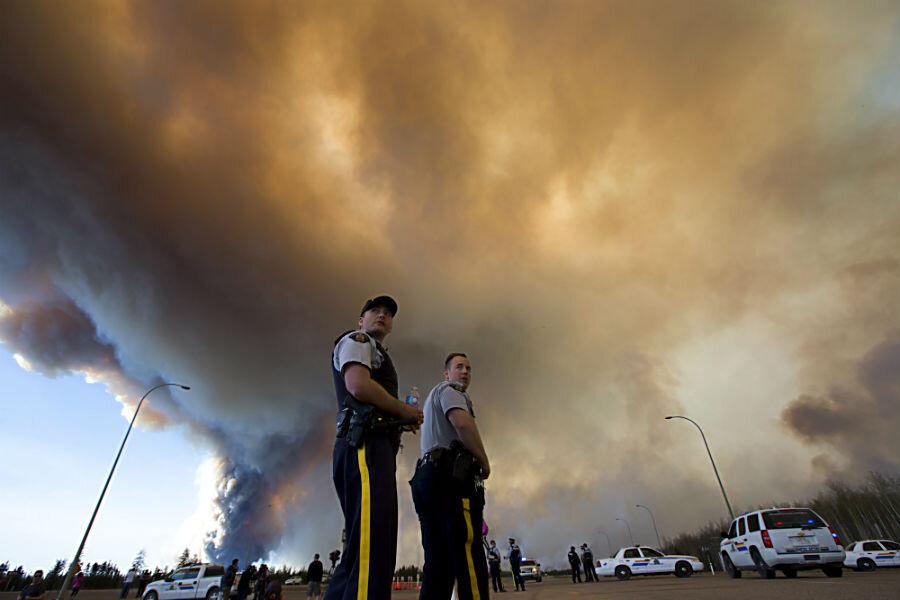Alberta wildfire: Is there an end in sight?
Loading...
The weeklong wildfire that consumed the hamlet of Fort McMurray in northern Alberta, Canada continues to rage, and firefighters remain uncertain how far the blaze could spread or when it will finally be put out.
“The situation remains unpredictable and dangerous,” Canadian Public Safety Minister Ralph Goodale said Saturday.
Since last Sunday, the fire has eaten up more than 750 square miles of Alberta forest and shows no signs of slowing down, while about 100,000 Canadians were forced to evacuate their homes near the Fort McMurray inferno. Many remain camped out in the area, although Albertan officials say traveling to better-equipped cities such as Edmonton or Calgary could be beneficial for those displaced by the disaster. As of Sunday, two people have died in a car crash while fleeing the fire.
The provincial government also said that the municipality’s residents, and those in neighboring hamlets and the nearby Fort McMurray First Nation, “should not expect to return home for an extended period of time.”
“Public safety is our number-one priority, and residents won’t be able to return home until it is safe to do so,” the administration said in a post on its emergency updates webpage.
Much of Fort McMurray was burned away in the fire, and, although it is now spreading north, officials are still concerned about safety in the forested urban service area – concerns that may not subside for weeks, or months, without the help of “a significant rain event.”
“Within the community itself I expect over the next coming month or two that they're going to be able to get a very good handle on the fire situation,” Chad Morrison, an Albertan wildlife prevention official, said Saturday according to Reuters.
Around 1,100 firefighters are operating in the Fort McMurray area with 145 helicopters, 22 air tankers, and more across the province. The disaster’s total cost could end up costing the Canadian government close to $7 billion from both firefighting efforts, emergency relief, and lost revenue from the region’s oil production. Around one-fourth of Canada’s output was placed offline because of the blaze.
The fire grew to its massive size thanks to regional conditions including heat, winds, and a lack of recent rainfall, conditions that could persist given the province’s recent climate history, University of California, Los Angeles geography professor and climate specialist Glen MacDonald told The Christian Science Monitor last week.
While the blaze could last for weeks in the absence of heavy rain, Mr. Morrison said that it is unlikely to spread to more densely-populated areas.
“We expect the fire to continue to grow...but it will be going away from the community,” he said, according to CBC News.
Even as the fire moves away from more built up areas, and as firefighters continue their efforts to put it out, officials say that the recovery period will take some time.
“The return won't be in coming days,” Rachel Notley, the Premier of Alberta, said according to CTV News.
“Once the immediate fire damage is completed there will be an enormous amount of work to do to make [Fort McMurray] safe and habitable,” she said.
For now, evacuation and relocation will continue for Alberta residents in the wildfire’s path, while emergency crews work to contain the blaze as best they can. The fire is expected to spread as far as Saskatchewan this weekend, with extreme conditions lasting for days. And even if the much-needed rainfall arrives, Morrison warned that “we’ll be here for weeks and weeks.”
“It’s not uncommon to have large landscape fires burn late into the year,” he said, according to The New York Times.






